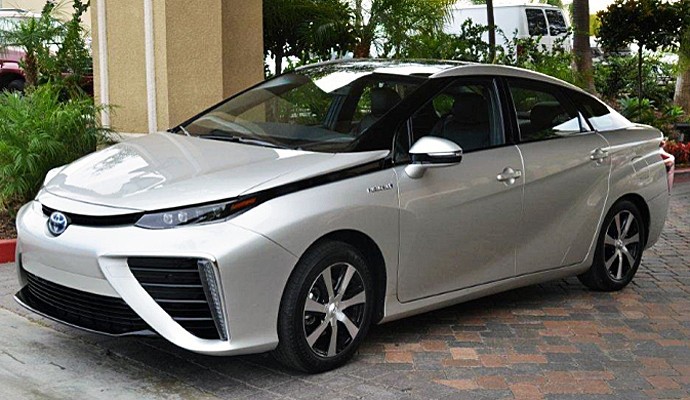Stanford has improved the cheap way of electrolysis of water
 In August last year, scientists from Stanford University for the first time demonstrated an inexpensive method of electrolysis of water, that is, the separation of H 2 O into oxygen and hydrogen. A simple AAA battery is sufficient to initiate the chemical process. Of course, instead of a battery, you can use a small solar panel that provides a potential difference of at least 1.5 volts.
In August last year, scientists from Stanford University for the first time demonstrated an inexpensive method of electrolysis of water, that is, the separation of H 2 O into oxygen and hydrogen. A simple AAA battery is sufficient to initiate the chemical process. Of course, instead of a battery, you can use a small solar panel that provides a potential difference of at least 1.5 volts.Last year, scientists used cathodes and anodes of nickel and nickel oxide. This is the first experience in the world when for electrolysis it was possible to abandon electrodes made of precious metals (platinum, iridium) and when the process was going on at such a low voltage.
Now they have managed to reduce the cost and simplify electrolysis, which will make hydrogen fuel even cheaper if the technology is brought to an industrial level. The advanced process for the cathode and the anode uses the same NiFeO x catalyst. That is, the anode and cathode no longer require different pH factors (one acidic, another alkaline), so that they can easily and conveniently be placed in a common vessel with water. It remains only to collect the excreted oxygen and hydrogen (although it is better not to collect oxygen, but to immediately release it into the atmosphere).
The video below shows how AAA electrolysis works. Oxygen is released from one electrode, and hydrogen from the other. The authors of the scientific work declare that the intensity of the reaction is even higher than with the combination of electrodes from traditional iridium oxide and platinum.
')
The reaction is stable and very active on the entire surface of the electrodes.
The secret of the "focus" is in the structure of the catalyst NiFeO x . Although it looks like simple materials, the structure of the material is very specific. It is somehow “grown” on carbon nanofibres (it is not entirely clear from scientific work how to make it). Scientists say that this wonderful catalyst in the future can be adapted for other chemical reactions other than water electrolysis.
Although this technology looks rather improbable, and all eight co-authors of the scientific work are Chinese, we should not forget that they work in the department of materials science and technology at Stanford University, one of the most respected scientific institutions in the world.
As a result of the catalytic reaction, metal oxide nanoparticles (iron, cobalt, nickel oxides or mixtures of their oxides) about 20 nm in size are electrochemically converted into ultra-small NiFeO x nanoparticles with a diameter of 2-5 nm as a result of the lithium-induced reaction. Unlike traditional chemical synthesis, the authors of the invention note, this method allows you to maintain an excellent electrical connection between the nanoparticles and leads to the formation of large areas for carrying out a catalytic reaction.
During the experiment, the continuous operation of the device in this way was checked for a whole week (more than 200 hours) without degradation of the electrodes, says Yi Cui, one of the authors of the scientific work. He added that the efficiency of electrolysis of water is 82% at room temperature (apparently, at normal pressure too).
The research results were published on June 23, 2015 in the journal Nature Communications (free access).
As noted a year earlier, this is a very important project, because it greatly simplifies the technology of manufacturing fuel cells with hydrogen. Mobile electronics and cars can work on such cells.

Toyota Mirai, one of the world's first hydrogen fuel cell vehicles. Sales began on December 15, 2014. Under his bottom are two cylinders with hydrogen under a pressure of 70 MPa. Refill takes 3-5 minutes. Travel range: 480 km
It is important that during the combustion of hydrogen the only by-product of combustion is water. The same water that was split into components, for example, with sunlight in the first stage of the technical process.
Source: https://habr.com/ru/post/365717/
All Articles